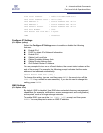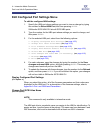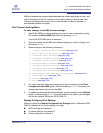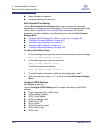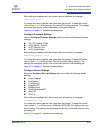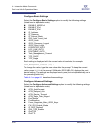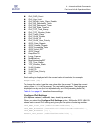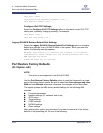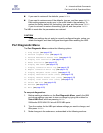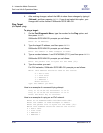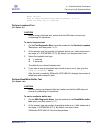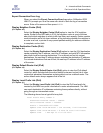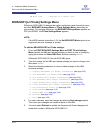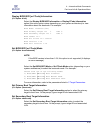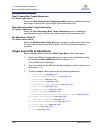
4 – Interactive Mode Commands
Port Level Info & Operations Menu
SN0054621-00 E 4-29
A
If you want to restore all the defaults, press ENTER.
If you want to restore some of the defaults, type no, and then press ENTER.
Each setting appears one-by-one, in the order listed in the preceding. To
restore the factory default for that setting, type yes, and then press ENTER.
If you do not want to restore this setting, type no, and then press ENTER.
The HBA is reset after the parameters are restored.
Port Diagnostic Menu
The Port Diagnostic Menu contains the following options:
1. Ping Target (see page 4-30)
2. Perform Loopback Test (see page 4-31)
3. Perform Read/Write Buffer Test (see page 4-31)
4. Display Port Statistics (see page 4-32)
5. Reset Statistics (see page 4-32)
6. Display ARP Table (see page 4-32)
7. Display Connection Error Log (see page 4-32)
8. Export Connection Error Log (see page 4-33)
9. Display Neighbor Cache (IPv6) (see page 4-33)
10. Display Destination Cache (IPv6) (see page 4-33)
11. Display Default Router List (IPv6) (see page 4-33)
12. Display Local Prefix List (IPv6) (see page 4-33)
13. Select HBA Port (see page 4-49)
14. Refresh (see page 4-49)
15. Exit (see page 4-50)
To use port diagnostics:
1. Before making a selection on the Port Diagnostic Menu, specify the HBA
port whose settings you want to view or change by typing the number for
Select HBA Port, and then pressing ENTER.
SANsurfer iSCSI HBA CLI lists all iSCSI HBA ports.
2. Type the number for the HBA port whose settings you want to change, and
then press ENTER.
3. Make changes in the submenus, as described in the following sections.
CAUTION!
These new settings do not apply to currently configured targets, unless you
delete the targets, and then configure them again after resetting the HBA.



